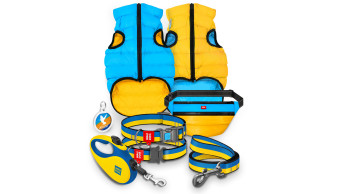

Lutz Weynans, managing director of the German reptile product manufacturer Namiba Terra, recently led an expedition to Sri Lanka. The as yet largely unexplored areas of the Knuckles Mountain Range in the former Ceylon were the destination.
Back in 2004, the non-fiction author Friedrich Wilhelm Henkel and Lutz Weynans, managing director of Namiba Terra, journeyed to the cloud and rain forests of Sri Lanka on an expedition. Their aim on that occasion was to research the habitats of the reptile species there. This year's expedition target, on the other hand, was the little-explored eastern region of the Knuckles Mountain Range and the east side of the Sinharaja rain forest. The team set out from the capital Colombo on its three-week circular tour, which took it first to Anuradhapura, the capital of the North Central Province. Large Water monitor lizards (Varanus salvator) and examples of the Oriental Garden Lizard, which live here in close proximity to people, could be observed by the roadside on the way. After a further 100 kilometres, the team finally reached Sigiriya, a monolith on which the ruins of a historic rock fortress are to be found. As well as Bengal monitors, Weynans and Henkel came across mainly skinks of the Mabuya genus in the scrub here.Geckos and ants in symbiosisReptiles also played a major role in the city of Kandy, where geckos of the Cnemaspis genus are to be found living in symbiosis with large ants in the Botanical Gardens. "The geckos are left alone by the more aggressive animals and live in groups on trees containing ant nests," explains Weynans. Gecko egg clutches were also found in these trees. Allocation to the 21 sub-species of Cnemaspis defined in Sri Lanka proved difficult, however, as the geckos have variable markings. From Kandy, the team travelled to the poorly accessible part of the eastern Knuckle mountains. The Leaf-nosed lizards of the Ceratophora tennentii species and lizards of the Calotes liocephalus species are endemic to this region. The team's journey continued along the south-east coast to Tissamaharama, close to the Yala National Park. "There we were able to photograph an adult Indian star tortoise, which has become rather rare in Sri Lanka." In the park itself, the two men encountered creatures of an altogether different size, with elephants crossing their path as well as crocodiles and leopards on one tour. On the last part of their journey, the travellers then achieved something special: shots of the dwarf lizard Ceratophora karu discovered four years ago in the Morningside region. Weynans and Henkel documented over 60 Cnemaspis populations in all on their trip. The interesting feature here is that these geckos are always to be found on rocks…
Related articles
Read also

 Menü
Menü






 1/2012
1/2012












 Newsletter
Newsletter